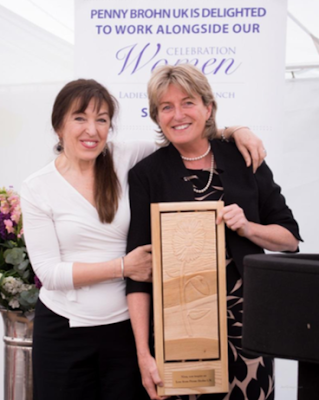Among other things, Nina founded Walk the Walk events, which have been hugely successful. They have raised millions for organisations helping those affected by cancer.
The folks at Penny Brohn were very keen to present her with a thank you gift carved using timber from a recently-cut Cedar of Lebanon in their grounds. It also had to be carved for a deadline in a month's time.
While cedar is a fairly stable wood as it seasons, using the green timber did mean that certain things had to be considered. Seasoning timber will move and change and the design had to take this into account. I normally carve timber that has been seasoned for much longer but I do also love a challenge!
Slices were cut from the log, keeping the rings as close to being at right angles to the large surfaces as possible. This means that the seasoning wood moves mainly in one plane (at right angles to the rings), rather than warping all over the place.
The piece of wood wasn't really big enough to get a single large slab from, so I decided to join smaller bits together carefully. It took a few tests to find the best glue to use (Bostik Wood Adhesive) but eventually they glued well. I like the bands of differing colours through the timber.
After drawing the design that they had requested on to the timber directly, I started carving. The cedar carved very cleanly, even though many other softwoods don't.
The frame has a small gap between it and the cedar, with the panel being held by four dowels (two at the top and two at the bottom) that aren't glued into it but are glued into the frame. This means that any movement in the cedar panel will just travel along the dowels and the assembly won't be weakened by the change. The finishing touch was a brass plaque with an inscription that was fixed to the frame.
A representative from Penny Brohn UK collected the plaque and seemed very happy with it. I suggested to her that it be hung somewhere away from direct sun and sources of heat such as radiators (to stop it drying too fast).
Apparently Nina was very happy to have received the award and it now hangs on her wall. Here's a photo from the award ceremony, kindly supplied by Penny Brohn UK and used with their permission:



